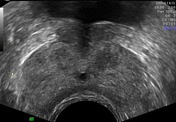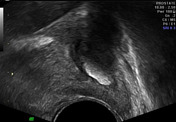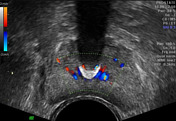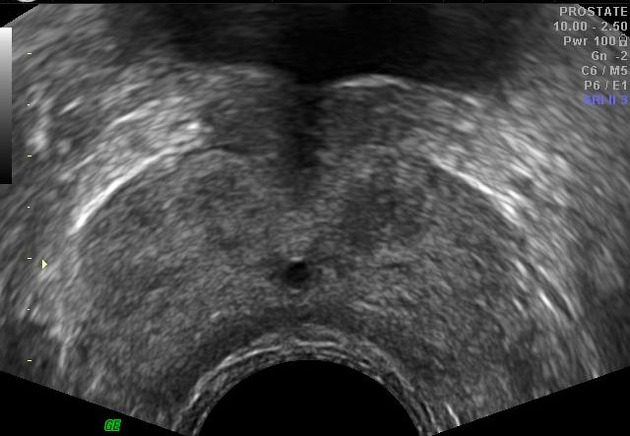Presentation
The patient presented with inability to pass urine for last 18 hours - suggestive of acute urinary retention. No history of abdominal pain, hematuria or trauma.
Patient Data





Transrectal ultrasound study shows echogenic calculus in the prostatic urethra with distal acoustic shadowing. The proximal portion of the urethra is dilated. The calculus measures 6 x 6 x 9 mm.
Case Discussion
Urethral calculi are most frequently found in the prostatic urethra which is more distensible than the distal narrow membranous portion. These are either native-formed in the prostatic urethra or migrated from the upper urinary tract.
The patients with urethral calculi may be completely asymptomatic or may have symptoms of varying severity ranging from hematuria, burning sensation in the urethra on urination, interruption of the urinary stream, pain to acute urinary retention.




 Unable to process the form. Check for errors and try again.
Unable to process the form. Check for errors and try again.